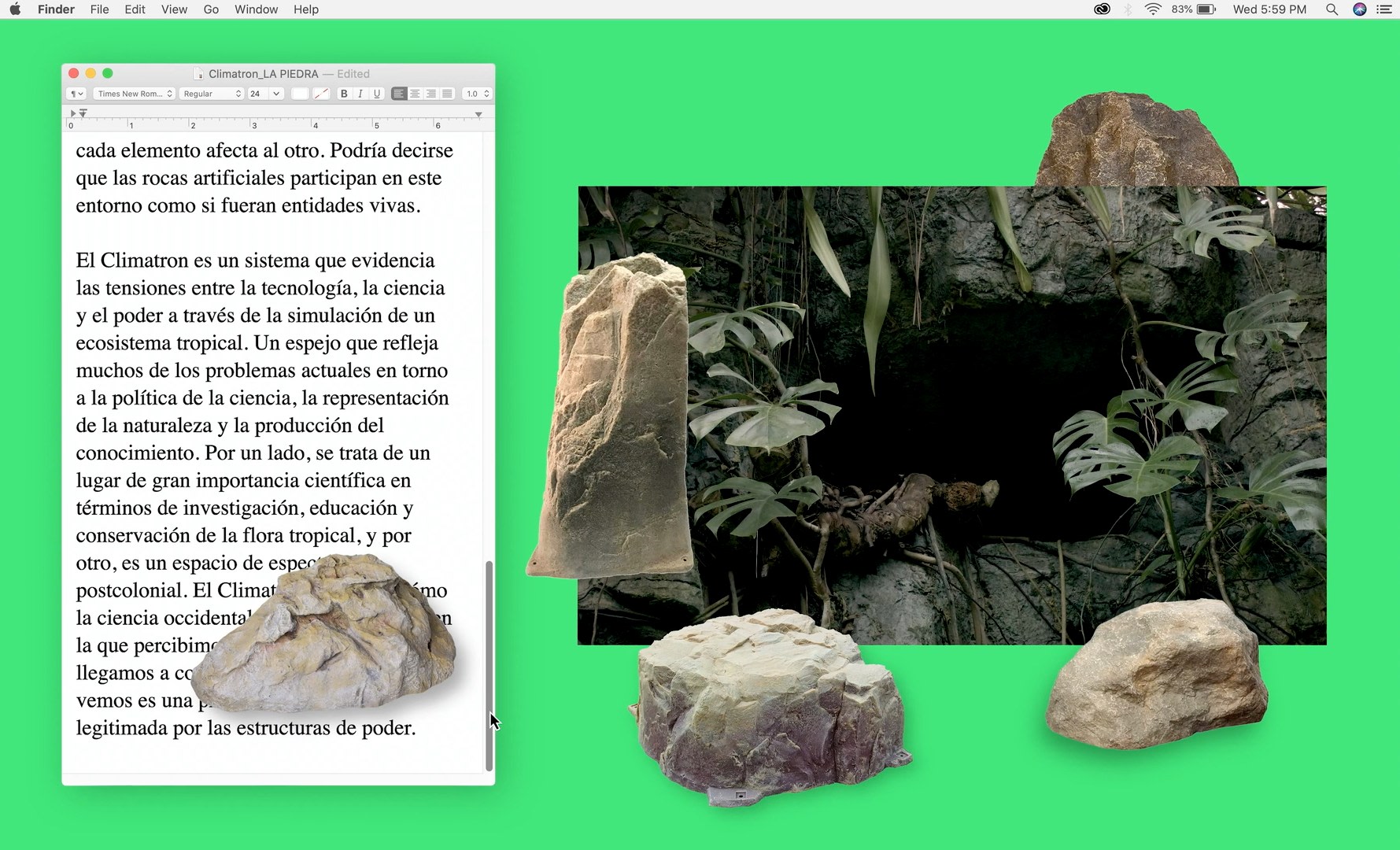Island of Simulation: A Tropical Playground
Date
2021
Typology
Video Essay
In collaboration with
Andrea Carrillo
Authors
Institute for Postnatural Studies
Lucía Millet
Lucía Pérez-Ugena
Duration
29 minutes
Island of Simulation: A Tropical Playground, a research project by artist Andrea Carrillo, explores the technological, ethical, and aesthetic implications embedded in the simulation of tropical ecosystems. The narrative is set against the Climatron, a geodesic dome greenhouse built in the 1960s in St. Louis, Missouri that attempted to simulate the climate zones of Hawaii, Java, the Indies, and the Amazon for research and spectacle purposes.

The work draws upon the complex issues around the production of the landscape, revealing colonial logic and principles of exoticism, the relationship between power and spectacle, and how western knowledge has been legitimized through science, technology, and aesthetics mean. Fluctuating between fact and fiction, the work attempts to subvert the ways in which we come to understand this tropical landscape and speculate on new forms of approaching nature. Through the use of animism, multiple non-human sensibilities are brought forward, sharply manifesting a supernatural dimension linked to the body and the sensorial. The characters of the story; the dome, the plants, and the fake rocks, are able to weave narratives around the ethnocentric obsessions of reproducing mini foreign worlds in enclosed spaces, posing larger questions around our complex relationship to nature as an “Other”. Through desire, these characters attempt to seduce the audience as a way to bring the tension between the desire of the object and the absurdity behind it.
This project is part of the Institute for Postnatural Studies Composting Fields. A virtual platform that, through an experimental format of exchange, makes visible and puts in relation to the research of young thinkers and/or artists. It emerges from virtual encounters in which a dialogue is generated around specific research, previously developed by the guest thinkers and/or artists, adapting its content to an informative format. These meetings generate performative videos that show the process of the conversation, where the object’s limits overflow. It also opens access to a bibliographic archive containing the materials worked on and consulted during the development of the project; it is a free and alternative platform of knowledge. This series is coordinated by Lucía Millet and Lucía Ugena.
Andrea Carrillo Iglesias
(Mexico 1986) is a visual artist and graphic designer. Her work combines research practices and artistic production exploring the relationship between image, power and knowledge, as well as their effects on the ways in which our reality is socially and aesthetically produced. Her work fluctuates between moving image, immersive installations and performance. Carrillo holds a Master degree in visual arts from the Sandberg Instituut, Rietveld Academy, and a Master degree in Art, Design and Public Domain from Harvard University. She has exhibited her work in Mexico, the Netherlands and the United States, and is currently a member of Coopia cooperative."During the last few years my artistic work has focused on exploring notions related to landscape and nature, both at political, poetic and social construction levels. Broadly speaking, my work explores the relationship between image, power and knowledge, and the effects on how our reality is produced socially and aesthetically. Within this framework, I present the Climatron project and case study"
